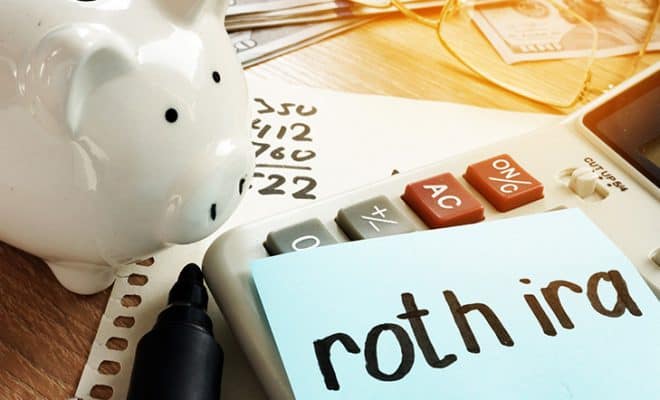5 Tips on Using an IRA to Pay for Education
When it comes to parenting, the list of responsibilities can be a long one. Right from offering your children a safe and lovable home to tending to their medical needs, the duty of a parent never ends. Among these, the most crucial one is perhaps offering your child with the right opportunities for education. Unfortunately, saving for higher education, especially college, is an uphill task. The costs of education are soaring in the country. Coupled with inflation, the final outcome can be astronomical. This is why it is important to start saving early and take advantage of the power of compounding.
There are several ways to save for higher education costs. The 529 education savings account is a common choice made by parents. Apart from this, you can also invest in the market, keep a dedicated bank account for your child’s educational expenses, or use an Individual Retirement Account (IRA) to fund a child’s college fees.
If you find yourself leaning towards using an IRA to pay for education expenses, here are some things you must keep in mind.
Table of Contents
1. Know the rules for withdrawals from an IRA
While the IRA makes for a good pick to cater to educational expenses, there are some rules that apply to it that may or may not suit you. Generally, if you withdraw funds from a retirement account, such as the IRA or a 401(k) account, the Internal Revenue Services (IRS) levies a 10% penalty if the withdrawal is made before the age of 59.5. However, there are some exemptions to this rule. You can withdraw funds without incurring the 10% penalty for qualified expenses, including:
- First time home purchase
- Health related expenditure not covered under an insurance plan
- College tuition
Moreover, even though college tuition is a qualified expense for which you can make withdrawals without paying a penalty, there are some rules to follow here, such as:
- The college expenses should be for yourself, your spouse, your child, or your grandchild.
- The student should be at least half time enrolled in a college or educational institution. This includes a public, private, or non-profit college, university, or post-secondary institution as well as vocational schools.
- The institution that the student goes to should be eligible to participate in a student aid program administered by the U.S. Department of Education.
The funds from an IRA can be used to cover a wide range of expenses apart from the tuition fee, including books, supplies, equipment required for the course, room rent, and boarding expenses.
A crucial point to note is that even though the qualified withdrawals do not attract a 10% penalty, you still have to pay income tax on the withdrawals. In addition to this, the total amount withdrawn cannot exceed the qualified expenses.
2. Understand the difference between using a Roth IRA and a traditional IRA for education expenses
The withdrawal rules are not the same for a Roth IRA and a Traditional IRA. Although both these retirement accounts can be used to cover qualified educational expenses, the treatment of taxes is different in both.
As you may know, a Roth IRA is funded by your after tax dollars, so your money grows tax free. On the other hand, a traditional IRA is funded by your before tax dollars and your money grows tax deferred. While there is no 10% penalty for making early withdrawals for qualified reasons, you will have to pay income tax on withdrawals made from a traditional IRA. The Roth IRA withdrawals, however, will not attract any income tax.
But, there are rules to follow here, as well. In order to draw tax free earnings from a Roth IRA:
- The Roth account should be open for at least 5 years. This is calculated from January 1 of the year when you made the first contribution. In case of a Roth conversion from a traditional account, the 5 year period is calculated from January 1 of the year you made the conversion.
- The tax payer should be 59.5 or older.
- The tax payer becomes
The contributions can be withdrawn even if the tax payer is not 59.5. However, if both the contributions and the earnings are withdrawn before the age of 59.5 and the Roth IRA has been held for less than 5 years, the earnings will be taxable.
Keeping these factors in view, the Roth IRA can be a better option out of the two IRAs with its lower tax liability.
3. Use an education IRA
You can consider using an education IRA to cover higher education expenses. An education IRA is a tax-advantaged account that allows you to invest for the purpose of higher education. It is also known as the Coverdell Education Savings Account (ESA). An education IRA allows tax deferred growth on your contributions. And qualified withdrawals can be made tax free.
You can make contributions to an ESA till the child turns 18. However, the funds can be used by the child till the age of 30. Some people misunderstand this and keep contributing money till the child turns 30. In this case, a 6% tax is levied on the contributions made after the age of 18.
Just like any other IRA, an education IRA can also be used to cover several college-related expenses, such as:
- Tuition fees
- Cost of books
- Travel expenses
- Supplies
- Course related equipment
- Computer or laptop
- Room rent
- Boarding charges, etc.
4. Keep in mind the repercussions of using an IRA on FAFSA
If you are looking forward to using the Free Application for Federal Student Aid (FAFSA), withdrawing funds from an IRA can obstruct the amount of financial aid you qualify for. In the case of an education IRA, if you apply for financial aid and use funds from the ESA, your financial aid eligibility can be reduced by approximately 5.64% of the amount of money you have in your ESA at the time of filling the application for financial aid.
Even if you use a traditional or Roth IRA, your financial aid eligibility will still be lowered. When a student applies for financial aid, they also have to report their income and owned assets. This helps FAFSA decide whether a family can afford the costs of college education or not. The Free Application for Federal Student Aid takes into account a family’s tax information from the last two years.
If, as a parent, you own a retirement account like a Roth IRA or a traditional IRA, FAFSA will see them as your financial assets. However, if you withdraw funds from any of these accounts two years before applying for financial aid, FAFSA will consider it as your income.
IRA funds can reduce financial aid by as much as half. This holds true even if you only withdraw your contributions and not the earnings. While the withdrawals made from contributions may not be counted in your taxable income for the year, they will still be seen as an income by FAFSA.
Having said that, the child can still apply for FAFSA and use the IRA funds for higher education expenses. But the financial aid may be reduced. Hence, it is important to account for these differences while planning for future costs.
5. Make sure you have another retirement account for your retirement expenses
The contribution limits for an IRA are fixed each year. For 2021, these are:
- $6,000 for investors below the age of 50.
- Investors aged 50 or older can add an extra $1,000 as a catch-up contribution every year, bringing the total to $7,000.
Since the limits are prefixed and it is not possible to surpass these, your IRA may have limited funds. If you use one account for your child’s education costs and your retirement, you may end up with insufficient savings. It can also be challenging to make up for lost time and money in your retirement, since you would be older and may have health concerns that prohibit you from working or earning.
Therefore, it is essential to have enough retirement savings. You could invest in the market, open a 401(k) retirement account, or buy a life annuity. Regardless of what you choose, make sure you start retirement planning at an early age, so you do not end up compromising your child’s future.
If you find yourself with inadequate funds for retirement, it may not be advisable to use your IRA for your children’s education expenses. In this case, you can consider a student loan. Even though the interest rates are high, your child will have plenty of time to repay the money. On the contrary, taking a loan in your retirement can be tougher to repay.
To sum it up
An IRA makes for a good pick in many scenarios. They also hold an advantage over 529 accounts in some ways, primarily because if your child does not intend on going to college, your 529 account will attract a penalty when you withdraw funds for non-qualified expenses. An IRA, on the other hand, can be used for a number of reasons. However, you need to make sure that your other retirement savings are safe, secure, and adequate before you use your IRA on a child. This can be done with efficient education and retirement planning.
Education and retirement planning are both long term processes and a financial advisor can help you ace it. You can use our free tool to reach out to upto 3 professional financial advisors today and find the one that best matches your needs.

















